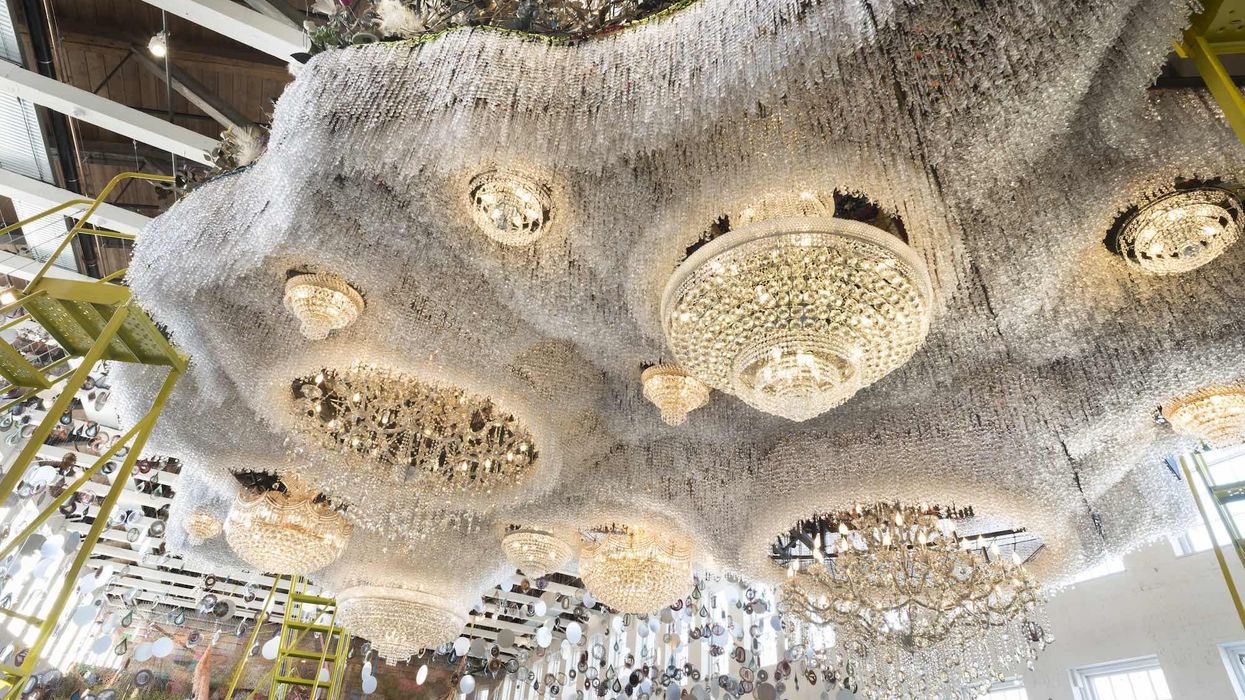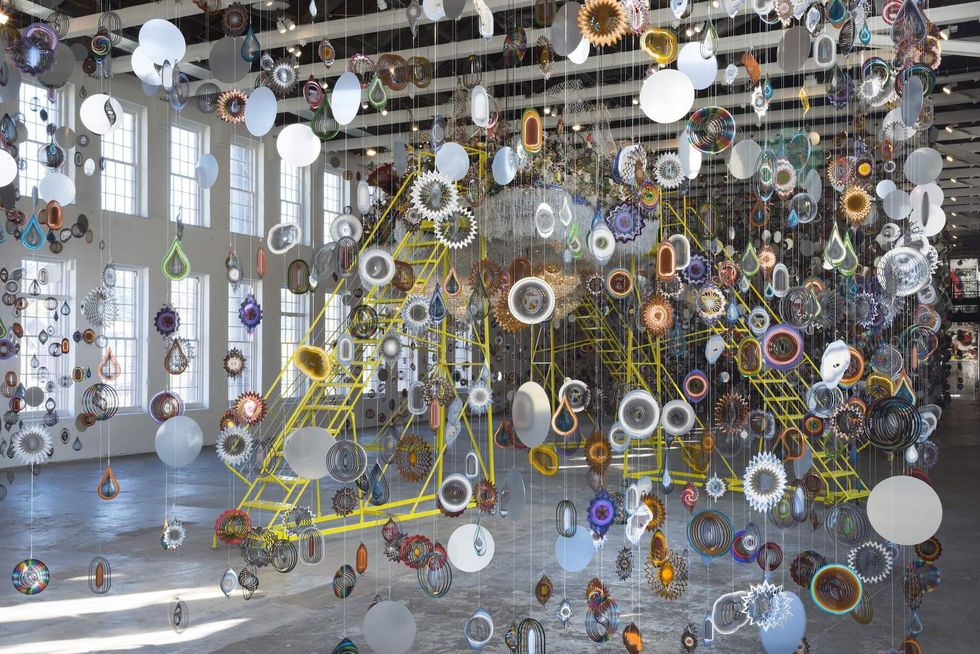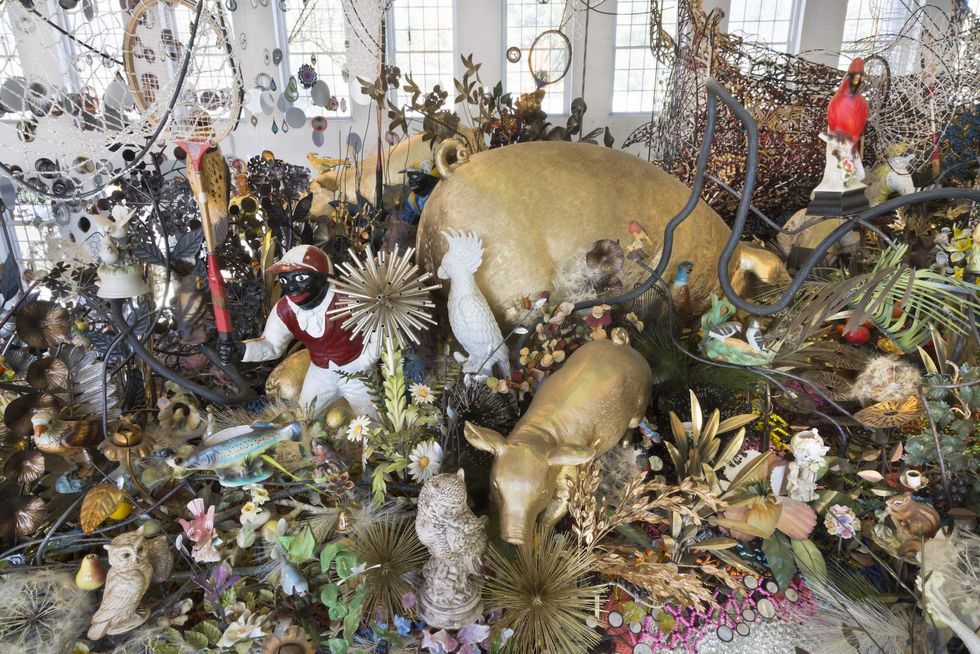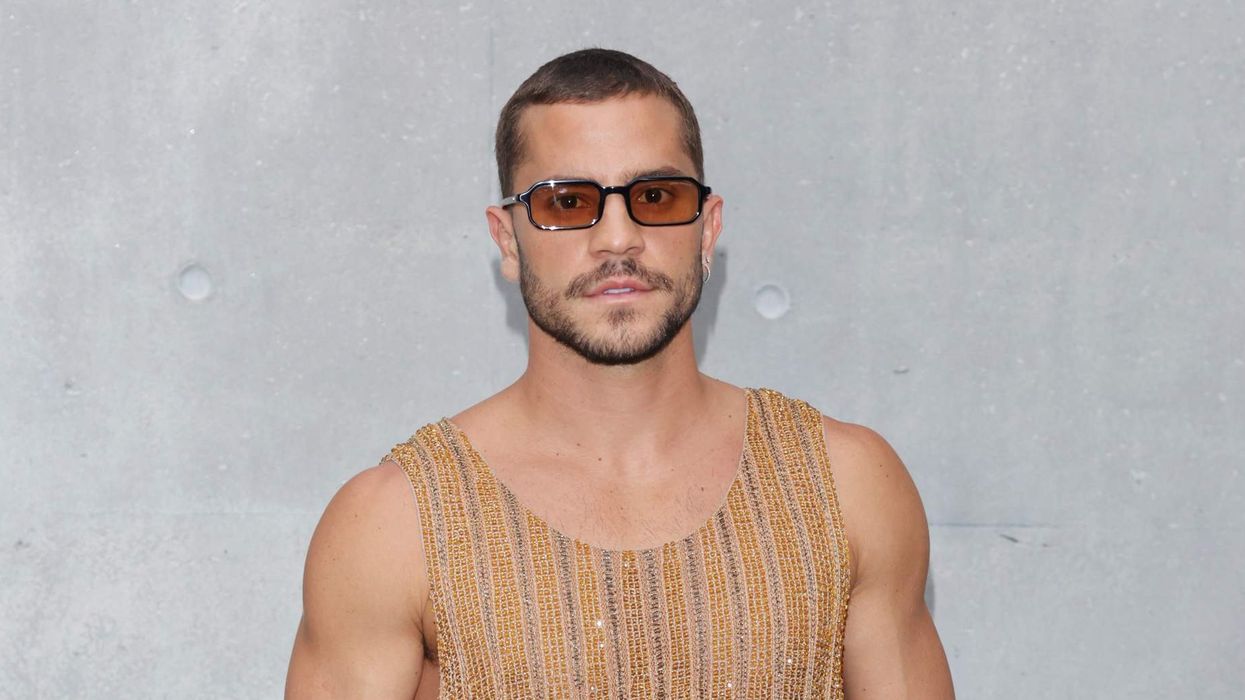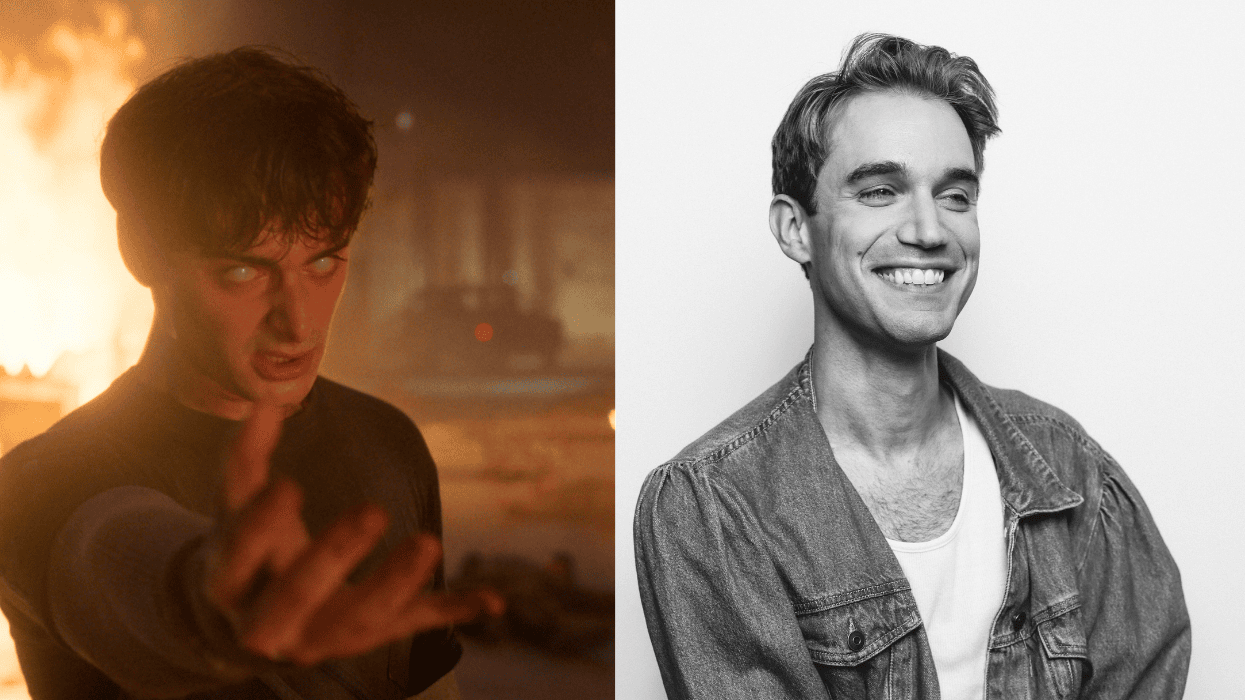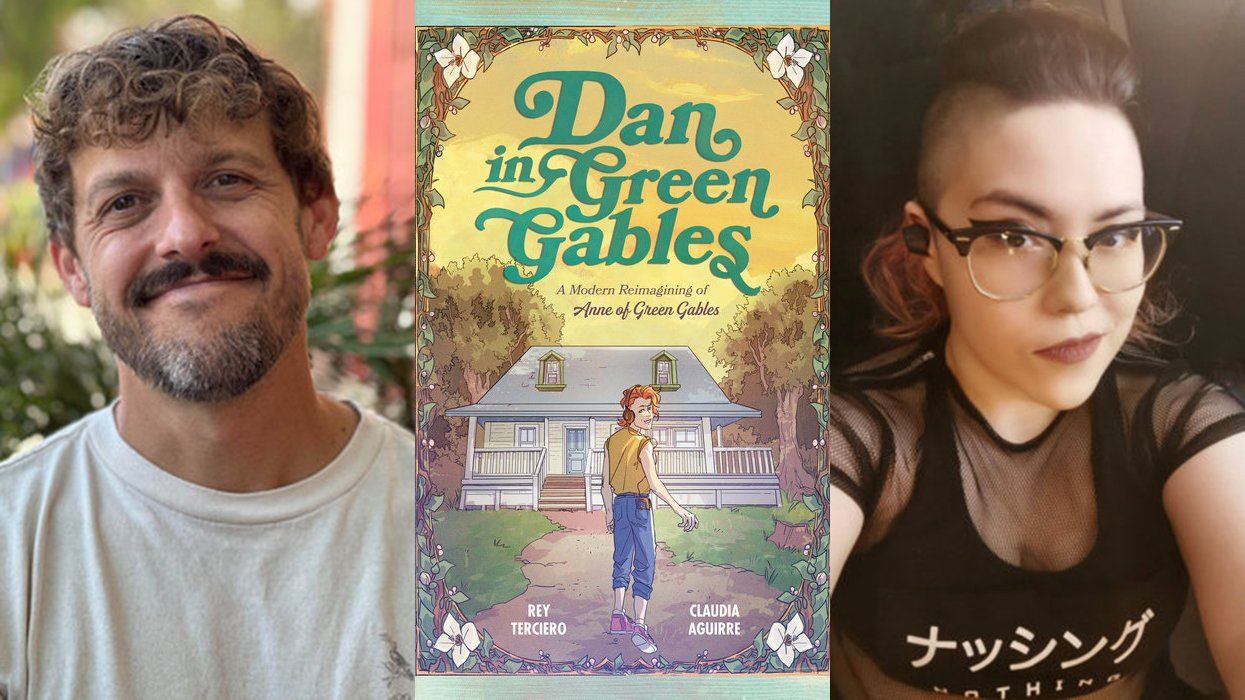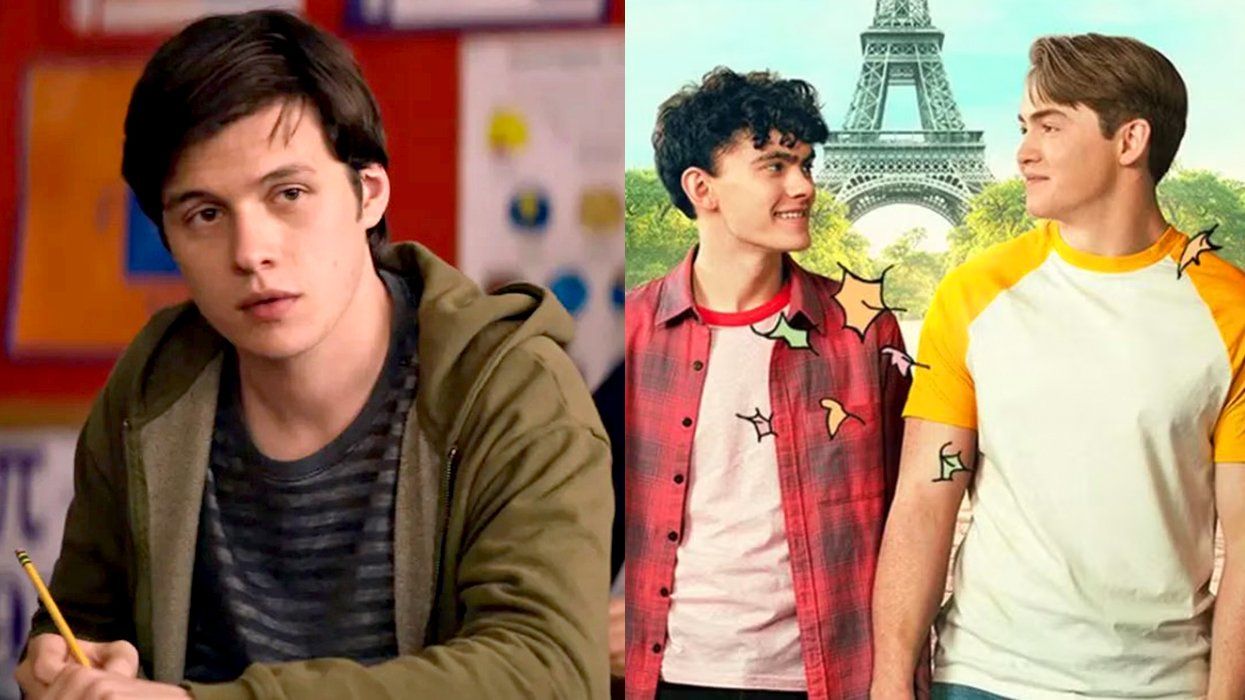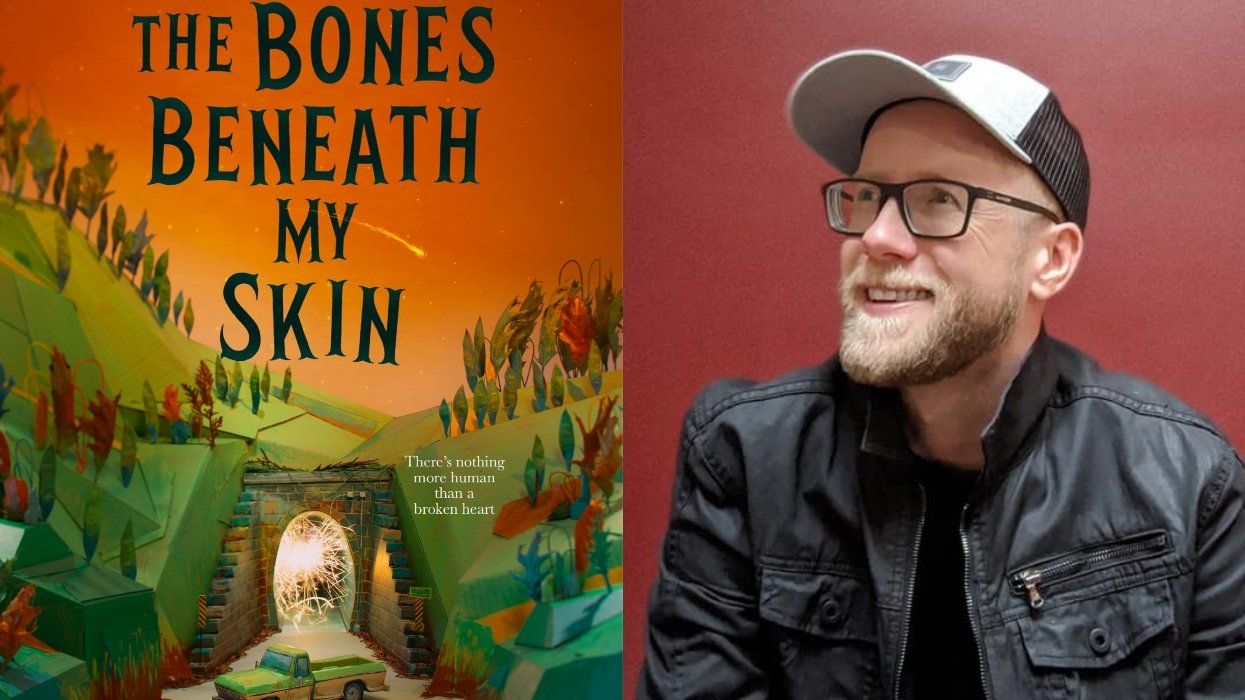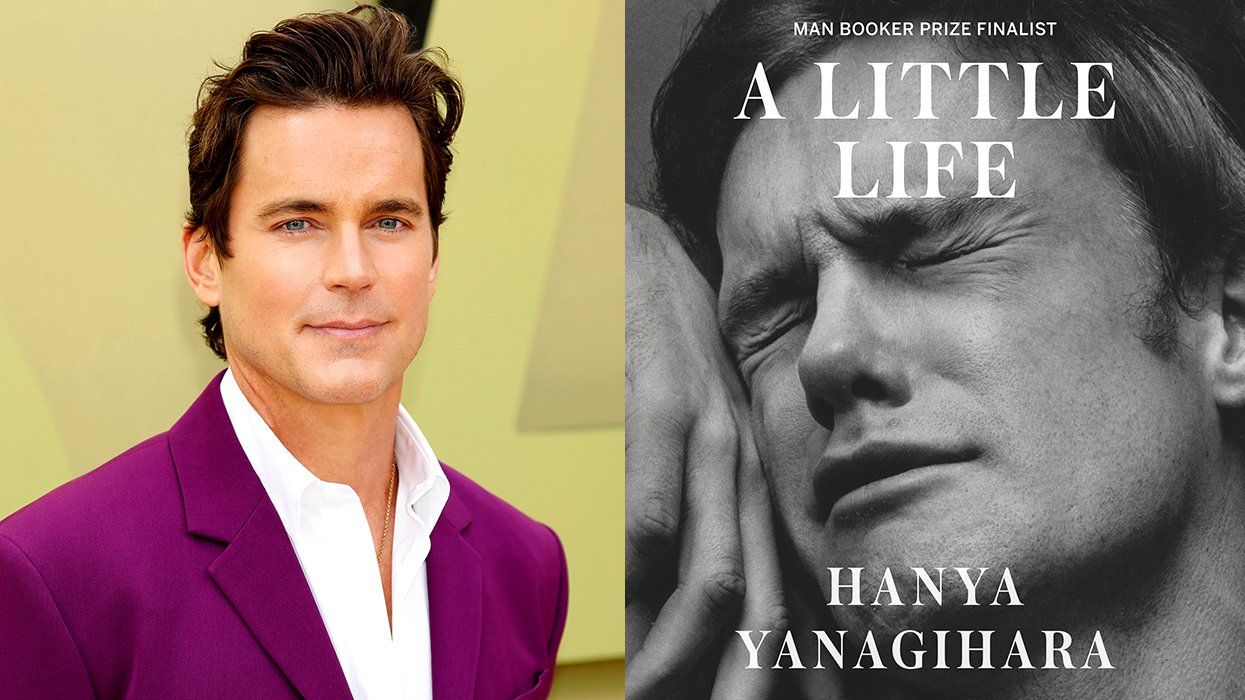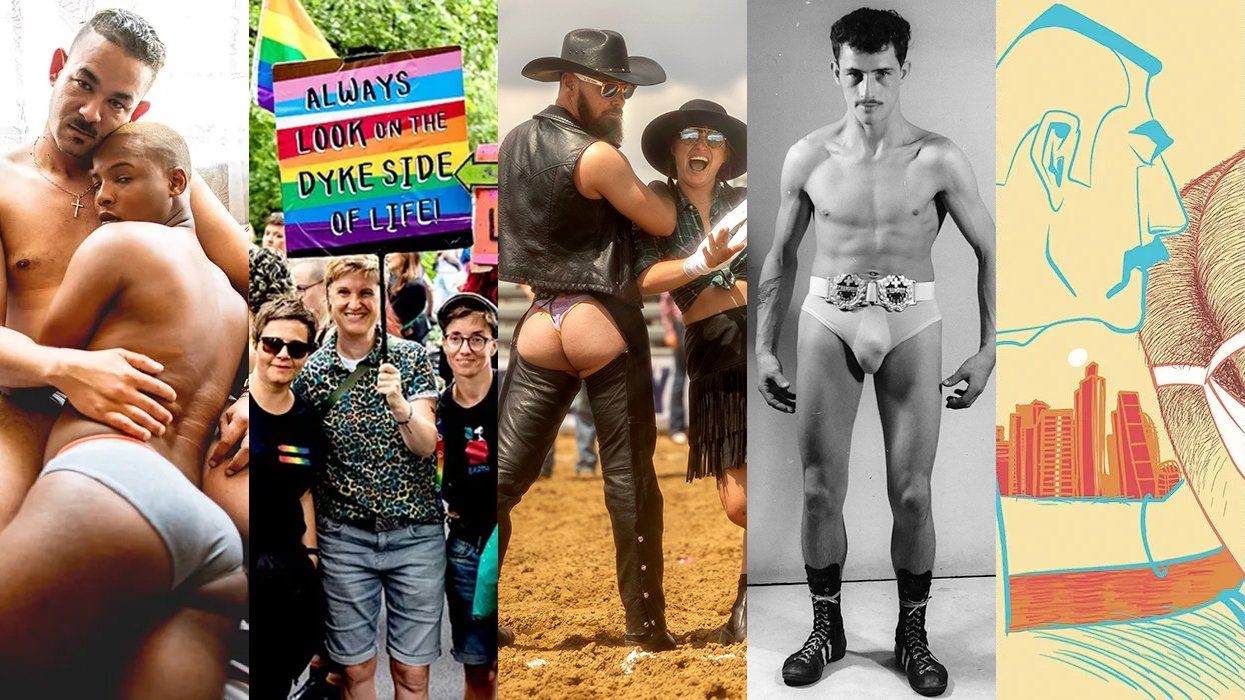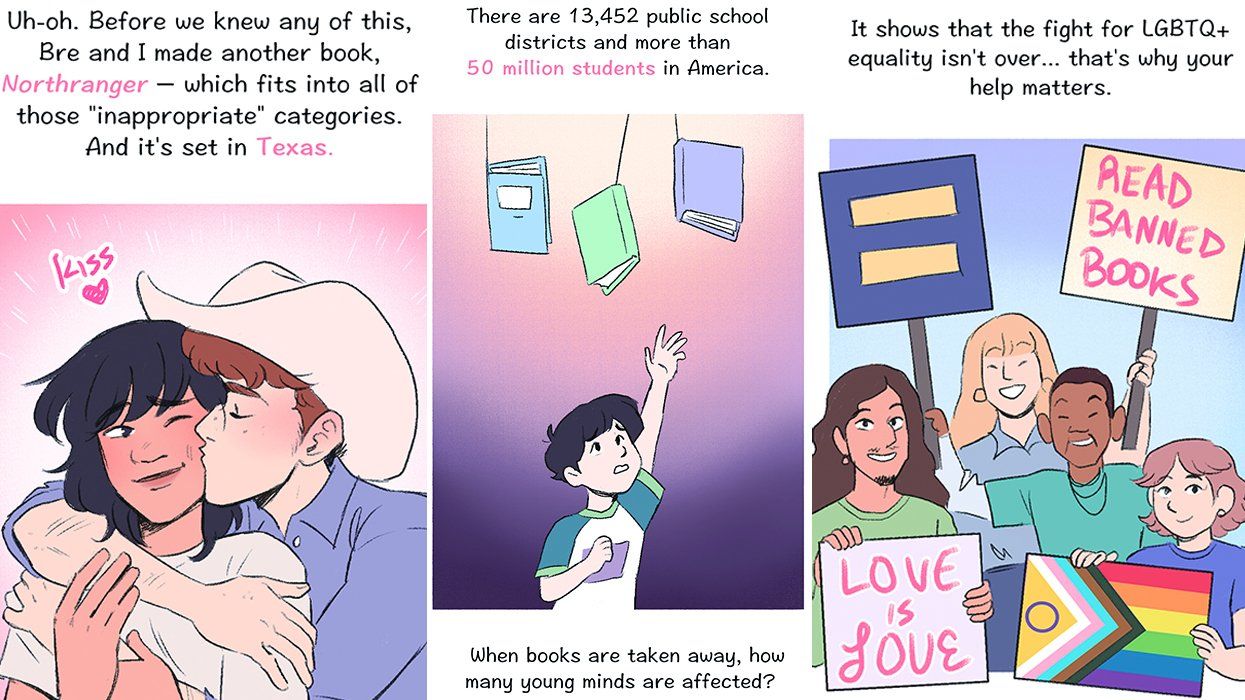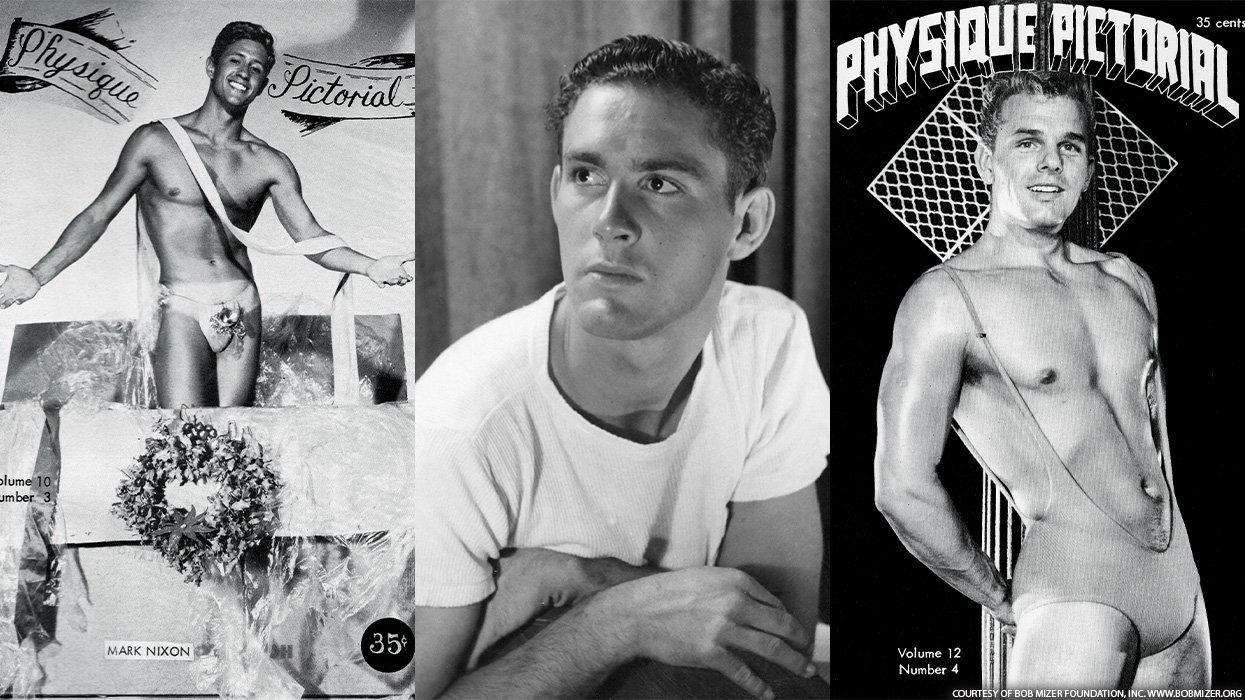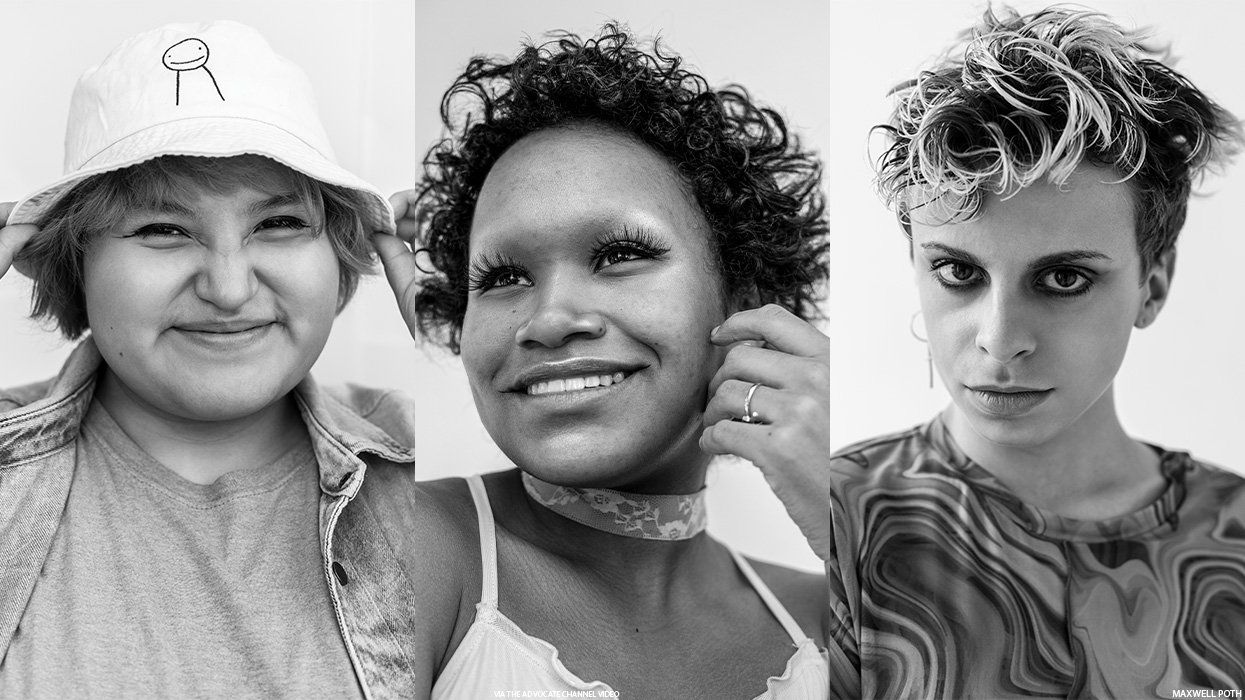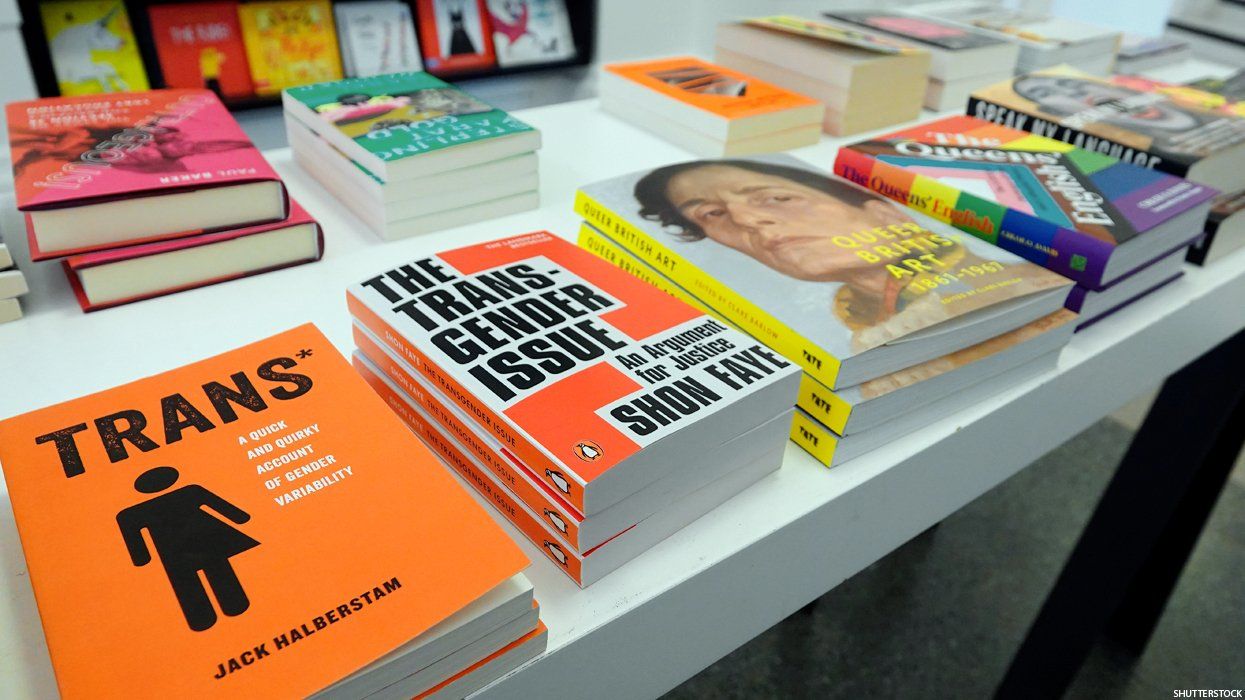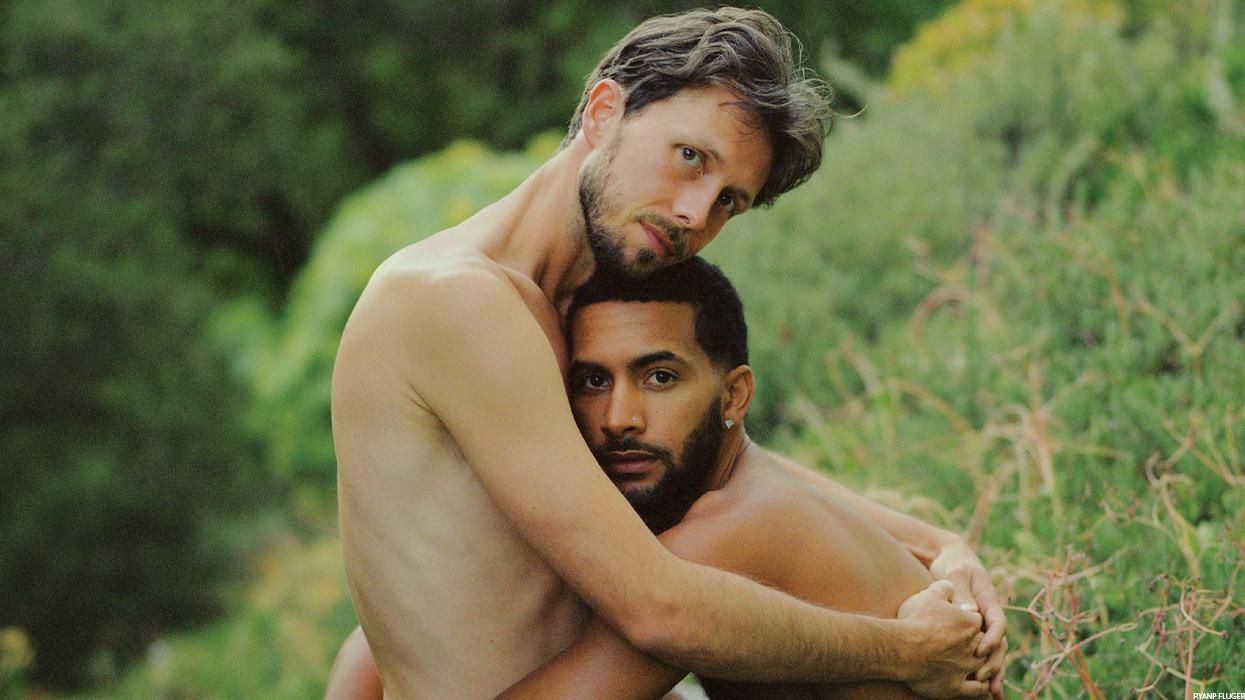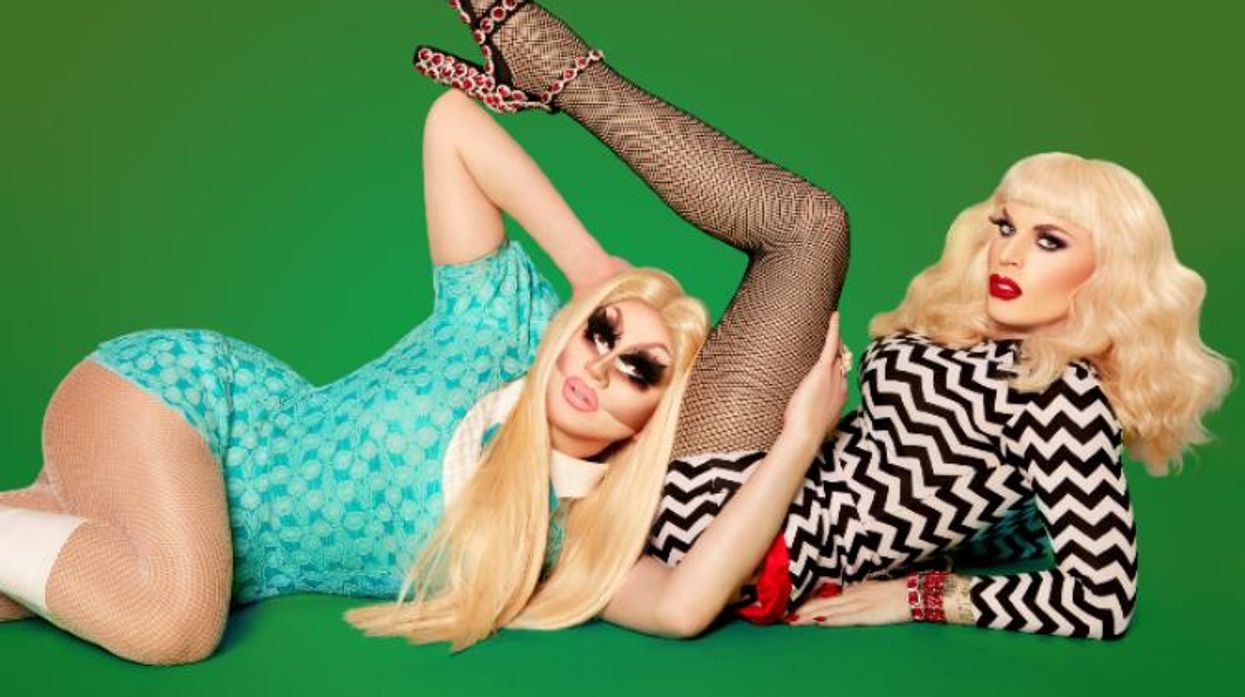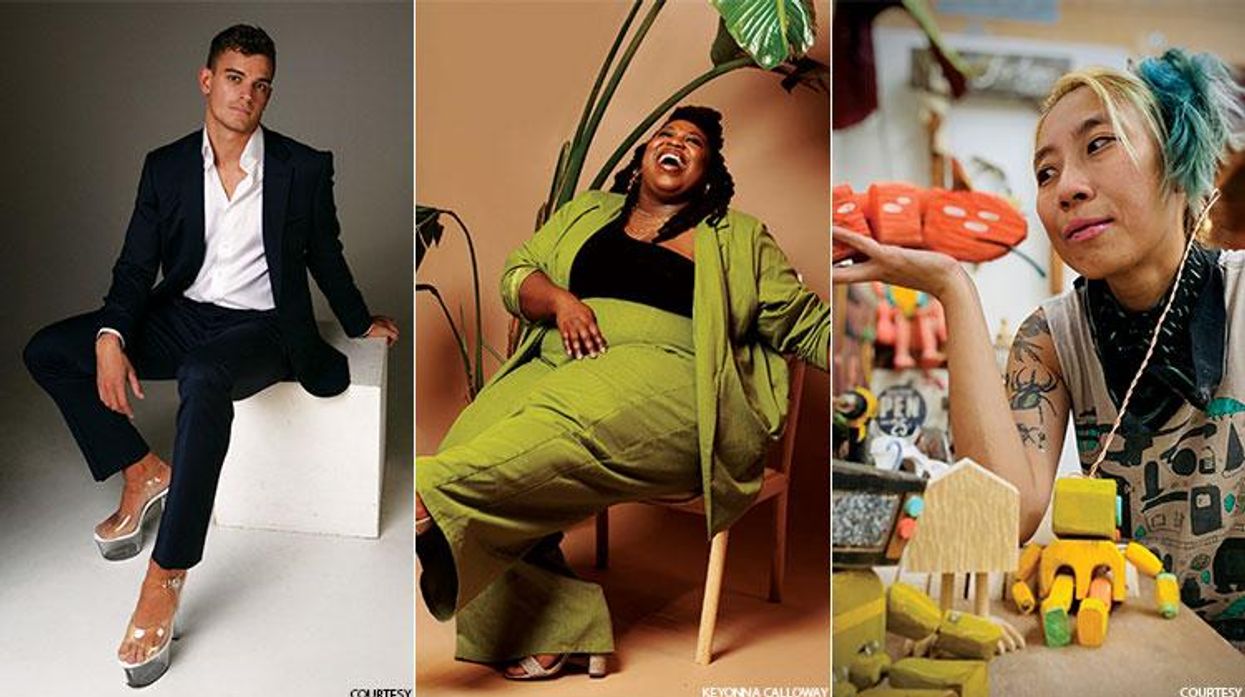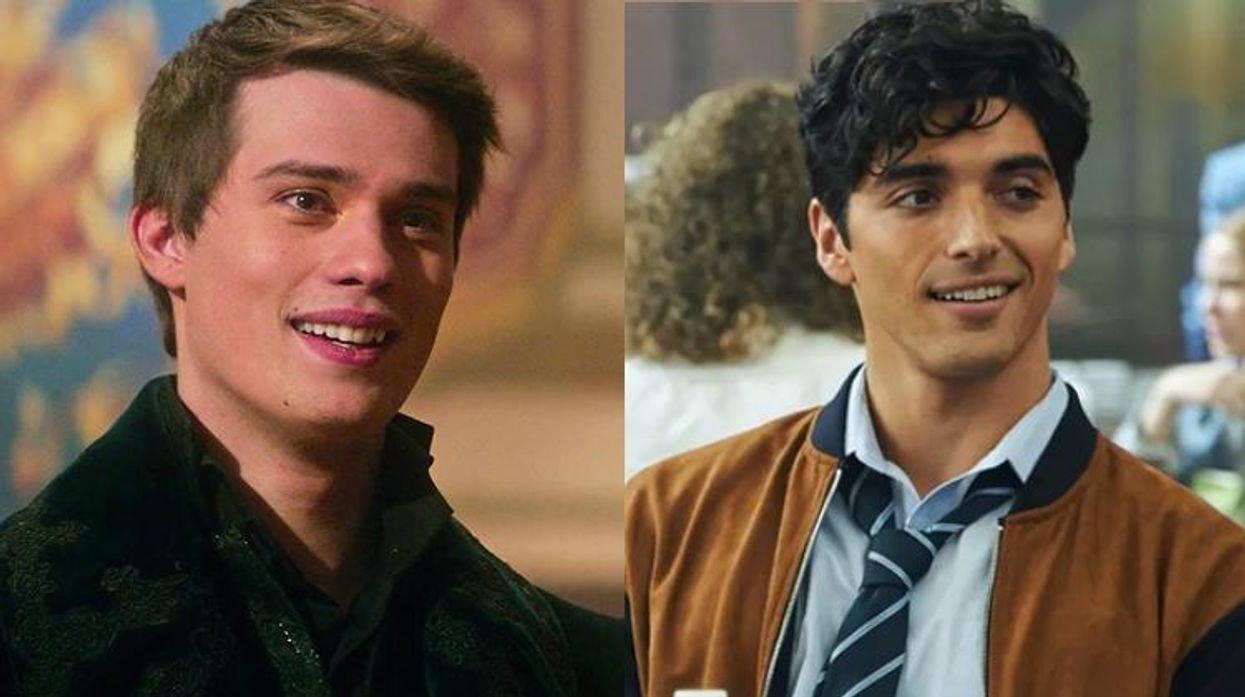Entering Nick Cave's MASS MoCA exhibition, Until, the space is filled with hundreds of colorful kinetic spinners, suspended like metallic rain drops falling from the sky. Past the twinkling garden accessories hovers a massive cloudscape decorated with ornate found objects, packed together like whimsical foliage. At once mesmerizing and dream-like, a closer look at Cave's work unravels the deceiving facade: guns, bullets and tear drops fill the spinners, while 18 black-faced lawn jockeys are dispersed in the cloud.
When the queer Chicago artist was approached in 2015 by MASS MoCA curator Denise Markonish to create an exhibition for the Massachusetts museum, she challenged him to abandon his signature Soundsuits--the political moving sculptures he'd become famous for. Markonish offered Cave a full year to think, allowing him to visit the space repeatedly and reflect on a statement he wanted to make in the quiet North Adams destination.
"I was waiting for something to come to fruition, but then the Eric Garner incident in New York happened," Cave says, recalling the man who was strangled to death by the NYPD. "Then there was Freddie Gray, Alton Sterling, Michael Brown, Sandra Bland, Christian Taylor and Sean Bell. I was in a state of despair, existing with a massive dark cloud over my head."
Photo courtesy MASS MoCA
Every day while working in-studio, the radio seemed to deliver endless reports about police brutality against people of color in America. Cave started paying attention to statistics and collecting data about the total number of people shot in 2016--58,549, according to Gun Violence Archive--and how many of these incidents were happening in his home city. After all this research, an existential question loomed in Cave's mind: "Is there racism in heaven?"
This inquiry began infiltrating MASS MoCA's football field-sized exhibition space, allowing Cave to intimately explore the idea and eventually invite others to confront racism together in an immersive environment. Cave's glistening, maximalist sculptures expanded on his Soundsuits, which he originally designed in response to the 1991 beatings of Rodney King--yet another display of unwarranted police violence. The title, Until, echoes this injustice: Innocent until proven guilty or, rather, guilty until proven innocent for black Americans.
Cave chose materials to create tension between beauty and pain as a way to fool attendees into facing the conversations about racism society ignores. Superficially, his kinetic spinners are wondrous, but speak to the gun violence happening in our own backyards. The crystal cloudscape is alluring, but its lawn jockeys recall a history of objects designed to repress and humiliate black Americans. A mountain range is dotted with colorful pony beads, but it resembles military tents to evoke a sense of danger.
"All of my work comes from a dark place," Cave says. "But I create a world around me that's really extraordinary, despite what I'm confronted with as a black man. I want to make beautiful work and still talk about issues that matter to me. I find opulence in what I do, so how can I use that to shift the conversation? How can I first draw you into the work and take you on this journey?"
Photo courtesy MASS MoCA
Beyond independently addressing Cave's conversation, the layout of Until forces you to experience it with others--complete strangers who're visiting the same day. Climbing up the ladders to see the rainbow-colored cloud up close, Cave designed the sculpture so guests would accidentally lock eyes with a fellow spectator across the way, as scattered lawn jockeys mutually fill their peripherals. For some, this instigates shame and embarrassment, but for others, this exchange triggers pain.
"You're having this voyeuristic experience [at Until], and as you're looking over the cloud's landscape, you see another person on the other side," Cave says. "There are these unexpected shared moments that can be somewhat uncomfortable, but you know just from eye contact that you're having a shared experience. Although your experience will be very different from mine, we still have empathy and can both advocate for ways to change the world. I want to be able to stand next to you hand-in-hand fighting for our rights."
Until also serves as an "eccentric, alternative Town Hall," Cave says, with event programming that advances the dialogue surrounding discrimination and American gun violence. Whether it's through performances, panel discussions or community forums, the artist's exhibition has developed into a magnet that brings people together in one closed space to reflect on his reconciling, reclaiming and reinterpreting racist objects.
"I'm an activist who uses art as a vehicle for change," Cave says. "I'm a messenger first and an artist second. So I want [Until] to be about beauty and optimism--I want it to speak about hope and be uplifting. I want it to be a way in and be a safe haven to talk about difficult issues."
Nick Cave's Until is on display at MASS MoCA through August 2017. For more information, visit massmoca.org.


